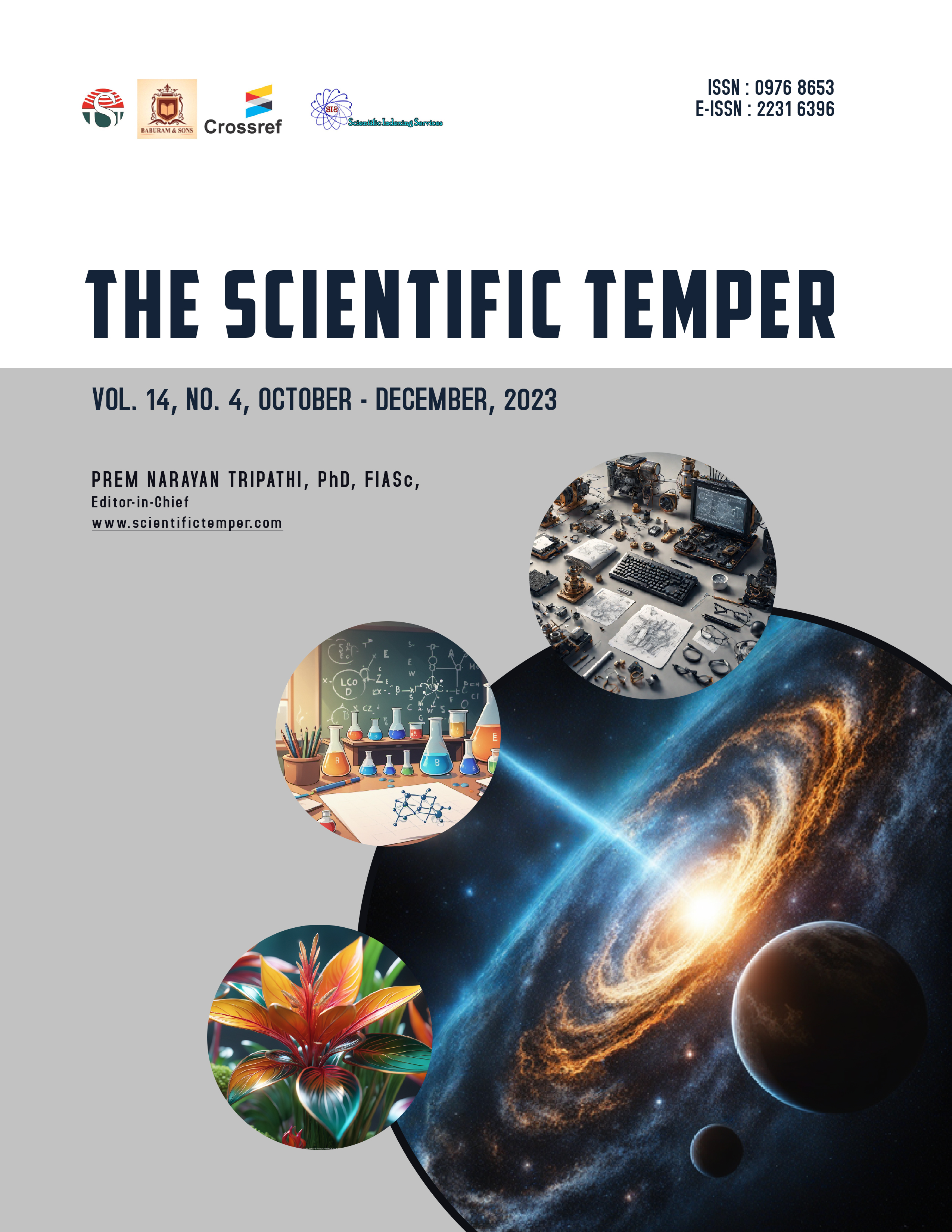Towards a better living environment-compressive strength and water absorption testing of mini compressed stabilized earth blocks and fired bricks
Downloads
Published
DOI:
https://doi.org/10.58414/SCIENTIFICTEMPER.2023.14.4.28Keywords:
Sustainability, Compressive strength, Compressed stabilized earth blocks, Fire burnt clay bricks, Aspect ratio.Dimensions Badge
Issue
Section
License
Copyright (c) 2023 The Scientific Temper

This work is licensed under a Creative Commons Attribution-NonCommercial-ShareAlike 4.0 International License.
The escalating demand for eco-friendly and energy-efficient building materials underscores a pivotal shift towards sustainable development catalyzed by heightened public consciousness. Leveraging community production optimizes local resources and curtails transportation overheads, fostering broader access to superior housing solutions. Emphasizing less-intensive construction techniques enhances material strength, insulation, and thermal attributes while significantly shrinking carbon footprints and waste generation. Particularly vital during crises, these methods invigorate local employment and champion environmental conservation. This study juxtaposes the performance metrics of Mini Compressed Stabilized Earth Blocks (MCSEB) and fire-burned clay bricks, focusing primarily on their compressive strength. The conventional production of fire-burned clay bricks poses notable challenges, especially regarding energy consumption and pollution. Their manufacturing, anchored in coal utilization, directly exacerbates greenhouse gas emissions. Compressed Stabilized Earth Blocks (CSEBs) emerge as a promising alternative in this context. Crafted by pressure on soil, their production eschews the need for coal or other combustibles, resulting in a significantly reduced carbon and energy footprint. When benchmarked against traditional fire-burned bricks, CSEBs, if demonstrating analogous compressive strengths, emerge as a viable replacement. A pivotal element in assessing compressive strength lies in factoring in the specimen’s dimensions, with platen restraint effects as a crucial metric. This research harnesses the platen test to comprehensively compare the compressive strengths of Fire Burnt Clay Bricks and Mini Compressed Stabilized Earth Blocks. This correlation suggests that Mini Compressed Stabilized Earth Blocks, when adjusted for size, can be deemed comparable in strength to Fire fire-burnt clay Bricks, making them a promising sustainable alternative in construction.Abstract
How to Cite
Downloads
Similar Articles
- Suprabha Amit Kshatriya, Jaymin K Bhalani, Early detection of fire and smoke using motion estimation algorithms utilizing machine learning , The Scientific Temper: Vol. 15 No. 04 (2024): The Scientific Temper
- Mamatha. N, Ajai Chandran CK, The need to identify challenges for the fire safety evacuation in high-rise buildings in India , The Scientific Temper: Vol. 16 No. 03 (2025): The Scientific Temper
- Akshay J., G. Mahesh Kumar, B. H. Manjunath, Optimizing durability of the thin white topping applying Taguchi method using desirability function , The Scientific Temper: Vol. 14 No. 04 (2023): The Scientific Temper
- Alka Ranjan, Evaluating mental well-being and environmental sustainability in Indian stories , The Scientific Temper: Vol. 16 No. Spl-1 (2025): The Scientific Temper
- Belgundkar Babita, Kharde Sangeeta, Dodamani Suneel, Socio-demographic and reproductive determinants of spontaneous abortion- A cross-sectional comparative research at a tertiary care hospital in North Karnataka, India , The Scientific Temper: Vol. 15 No. 01 (2024): The Scientific Temper
- Suprabha Amit Kshatriya, Jaymin K Bhalani, Fire and smoke detection with high accuracy using YOLOv5 , The Scientific Temper: Vol. 16 No. 06 (2025): The Scientific Temper
- Susithra N, Rajalakshmi K, Ashwath P, Performance analysis of compressive sensing and reconstruction by LASSO and OMP for audio signal processing applications , The Scientific Temper: Vol. 14 No. 01 (2023): The Scientific Temper
- Arunachalaprabu G, Fathima Bibi K, A pattern-driven Huffman encoding and positional encoding for DNA compression , The Scientific Temper: Vol. 16 No. 06 (2025): The Scientific Temper
- Sabeerath K, Manikandasaran S. Sundaram, BTEDD: Block-level tokens for efficient data deduplication in public cloud infrastructures , The Scientific Temper: Vol. 15 No. 03 (2024): The Scientific Temper
- S. Jerinrechal, I. Antonitte Vinoline, A vendor-constrained economic production quantity model integrating scrap recovery under sustainability , The Scientific Temper: Vol. 16 No. 08 (2025): The Scientific Temper
You may also start an advanced similarity search for this article.



